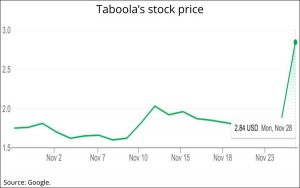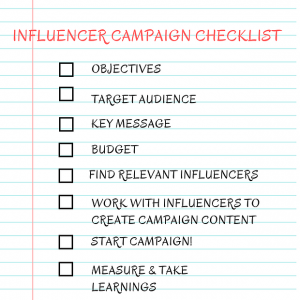Steep tariffs could have a silver lining: They have the potential to end the current era of cheap, disposable clothing.
Step into Target, Walmart, or Old Navy and you’ll find a smorgasbord of $3 T-shirts, $12 dresses, and $20 sweaters. If you visit Temu, Shein, or Haul’s websites, you’ll find these items at even lower prices. And the reason Americans have access to such rock-bottom prices? Such fast fashion is made overseas, largely in China, where raw materials and labor are cheap(er).
President-elect Donald Trump might put an end to this era of cheap clothing. Throughout his campaign, he vowed to impose tariffs on products imported into the United States—and he reiterated this promise last week. Since only 3% of clothing purchased in the U.S. is made domestically, this means that almost every garment you buy will be subject to these new taxes. Brands are more than likely to pass these tariffs onto the consumer, causing the price of clothing to increase. American consumers may not be happy about these higher prices, but from an environmental perspective, these tariffs could have a silver lining.
For years, the low price of clothing has been a major concern to sustainability activists. As the price of clothing has steadily decreased over the past 4 decades, consumers have begun thinking of clothes as disposable objects that can be thrown out after just seven or eight wears. Yet, manufacturing these clothes generates roughly 10% of global greenhouse gas emissions. The world is, in fact, running out of space for all the discarded clothing. Rich nations ship this waste to developing countries like Ghana and Chile, creating gargantuan mountains of garments that can been seen from space.

The Trump tariffs could reshape the fashion industry. By raising prices, many consumers would be forced to buy less and hold on to garments longer, which could nudge consumers away from constantly buying trendy pieces in favor of focusing on durability. And if these tariffs stay in place for years, some brands might consider moving their manufacturing to the United States, where wages and labor standards are higher.
But not all experts believe the Trump tariffs will kill fast fashion. Some believe brands will find ways to keep prices low by further slashing workers’ pay. Others believe that consumers are so hooked on fast fashion, they will just pay more for their hauls. There’s obviously a lot of uncertainty about what will happen when the tariffs go into effect—and part of it will have to do with how American companies and consumers react to them.
How We Got Here
As recently as 1980, 70% of clothing was made in the United States. America grew plenty of cotton, which was milled into fabric and sent to factories in North Carolina, Pennsylvania, and Texas, where it would be turned into clothing. But in the decades that followed, government policies made it easier for companies to manufacture clothing overseas.
In 1983, China and the United States established a trade commission to discuss bilateral trade. American companies showed interest in making clothes in China, where wages and raw materials were cheaper. The Chinese government, eager for this new business, supported companies that wanted to build clothing factories. Now, four decades later, only 3% of clothing is made in the US.
America’s trade policies laid the foundation for the modern fashion industry. European companies like Zara and H&M saw the potential for a new kind of business model—coining the term “fast fashion”—in which they would copy the latest runway looks and mass produce them at low prices using cheaper materials and low-cost overseas labor. By the early 2000s, most clothes were fast fashion. Brands across the retail landscape, from Gap and Forever 21 to Abercrombie & Fitch, relied on Chinese factories. The price of clothing steadily came down. In one study, clothing that would have cost $100 in 1993 cost only $59.10 in 2013, adjusted for inflation.
In the midst of the pandemic, a new development emerged as Chinese companies like Shein and Temu realized they could make clothes even more cheaply by making them in small batches. By shipping products directly to American customers, they could avoid paying tariffs, thanks to a rule called the de minimus exemption, where shipments valued at less than $800 are not subject to duties and taxes. Shein has grown exponentially over the past three years, generating more than $32 billion in 2023, which was more than Zara and H&M combined.
Can Manufacturing Ever Really Come Back?
When Trump spoke of the tariffs on the campaign trail, he positioned the policy as a means for bringing manufacturing jobs back to the United States. His vision is to turn back the clock and return to a time when clothes were made in America. But in practice, experts say it would be virtually impossible to accomplish this in an administration’s four-year term. It took years for China to develop the infrastructure and skill to manufacture clothing. “We cannot just flip a switch just because the price goes up in China, and start making T-shirts here in the U.S.,” says Hilary Jochmans, president of Jochmans Consulting, a government affairs law firm focused on fashion.
Jon Gold, VP of supply chain and customs policy at the National Retail Federation, agrees. “Solely relying on tariffs to bring manufacturing to the U.S. has never worked in the past,” says Gold. “It takes time to find a skilled workforce. Unemployment is at a record low—so where are we going to find workers to do those jobs?”
Gold and Jochmans believe that bringing clothing factories back to the United States would be a good thing for American companies. Indeed, there have been a few brands, like American Giant, Buck Mason, and Carhartt, that have tried to set up domestic supply chains. But for this to happen at an industry-wide scale, these experts say that government would need to invest in building manufacturing infrastructure, which is very expensive. It would also need to provide incentives for workers to train to work in clothing factories.
The Biden administration believed investing in infrastructure was the key to bringing manufacturing and jobs back to the United States—but that approach also comes at a price. In 2022, President Biden signed the CHIPS and Science Act into law, which allocated $53 billion to bring supply chains in the nanotechnology and clean-energy sectors back to the US. Meanwhile, the Trump administration hasn’t laid out any plans to support American brands and companies in moving manufacturing back to the United States.

What Comes Next
Even if it were possible to make clothes in the United States again, it would take years, if not decades, to build this supply chain. So in the short term, brands will continue making their clothes overseas and pay the tariffs. When it comes to fast fashion, Jochmans isn’t sure that increased prices will change consumer behavior. “The prices of clothes have gotten so cheap that consumers may not care if their $5 tank top is now $6,” she says.
But other experts believe that some brands may rethink their business strategies. For years, brands have competed with one another on price. In their race to the bottom, they’ve cut corners on quality and durability. Many brands have stopped testing the fit of each outfit, since this is too labor-intensive. But consumers may no longer be satisfied with low-quality, poorly fitting clothes if they must pay more for them. “Fast fashion is going to see a lot of challenges,” suggests Angeli Gianchandani, an adjunct professor of marketing at New York University who spent her early career in the fashion industry. “If you’re selling low-quality clothing that is now 20% more expensive, it’s no longer going to be good value for the consumer.”
Gianchandani says a smarter approach would be for these brands to rethink their design process to focus on creating classic, longer-lasting pieces. Instead of selling a $10 T-shirt, they might sell the T-shirt for $15—and market it as a “premium” product.
Amanda Lee McCarty, host of the Clotheshorse podcast about sustainable fashion, agrees this would be a clever strategy. Indeed, she’s been arguing for years that big fast-fashion brands such as Zara and H&M should push back against the status quo and design products focused on quality and classic style. But no brand has yet had the courage to go against the stream because they’re so worried about losing out to their competitors.
Having spent years working in the industry for fast-fashion players including Urban Outfitters and Modcloth, McCarty fears that brands will respond to these tariffs by digging further into the fast-fashion business model. “I saw this happen during the recession, when consumers were spending less,” McCarty says. “Brands find ways to keep making clothes cheaper by paying workers less and using even worse materials. It’s hard to imagine clothes becoming even lower in quality, but it is possible.”
McCarty is particularly concerned about the impact on garment workers overseas, who are vulnerable. This workforce is already paid very little; many do not make a living wage. And historically, Western companies have turned a blind eye to the sweatshop conditions in factories, where harassment and wage theft is common. “The brands might try to keep their prices the same, and make up for the tariffs by putting pressure on factories to lower prices,” she says. “The human cost of doing this would be horrific.”
There is a lot that is still unclear about what lies ahead. But tariffs have the potential to turn the fashion industry upside down. And there’s the possibility that higher prices could spell the end of fast fashion and its terrible impact on the planet. Even if it doesn’t, McCarty says that there is a lot we can do, as everyday Americans, to fight for a more sustainable fashion industry. There is current legislation in California and New York that would force fashion brands to take responsibility for their impact on the planet and workers. McCarty argues that we can advocate for these more direct efforts to make fashion more sustainable. “We’re not completely powerless here,” says McCarty. “We can reach out to our elected officials and make our voices heard.”
(5)
Report Post







